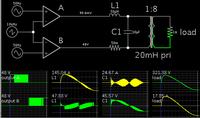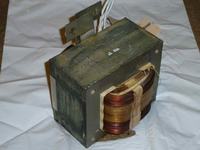- Joined
- Jan 22, 2008
- Messages
- 52,374
- Helped
- 14,746
- Reputation
- 29,774
- Reaction score
- 14,087
- Trophy points
- 1,393
- Location
- Bochum, Germany
- Activity points
- 297,885
I presume Falstad doesn't use a saturable core in the standard transformer model (other circuit simulators do neither, and it's always a bit demanding to find the right core parameters if you use such a model).On the other hand, if you start the SPWM at the 90 or 270 degree mark, then you expose all components to peak current abruptly.
But if you have a saturable core, then the sine voltage should be in fact started at 90 or 270 degree to avoid saturation (You want a symmetrical flux ∫Vdt, so you start with half the area). Of course this contradicts the idea of smooth filter capacitor start current.
So yes, a voltage ramp is probably the most simple solution. Alternatively, a fast saturation free start could use one halfwave of 50% magnitude and switch to 100% after the first zero crossing.

